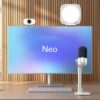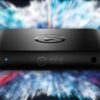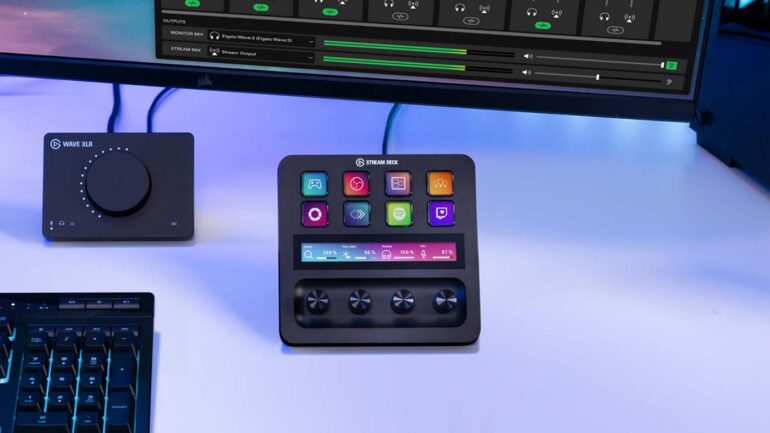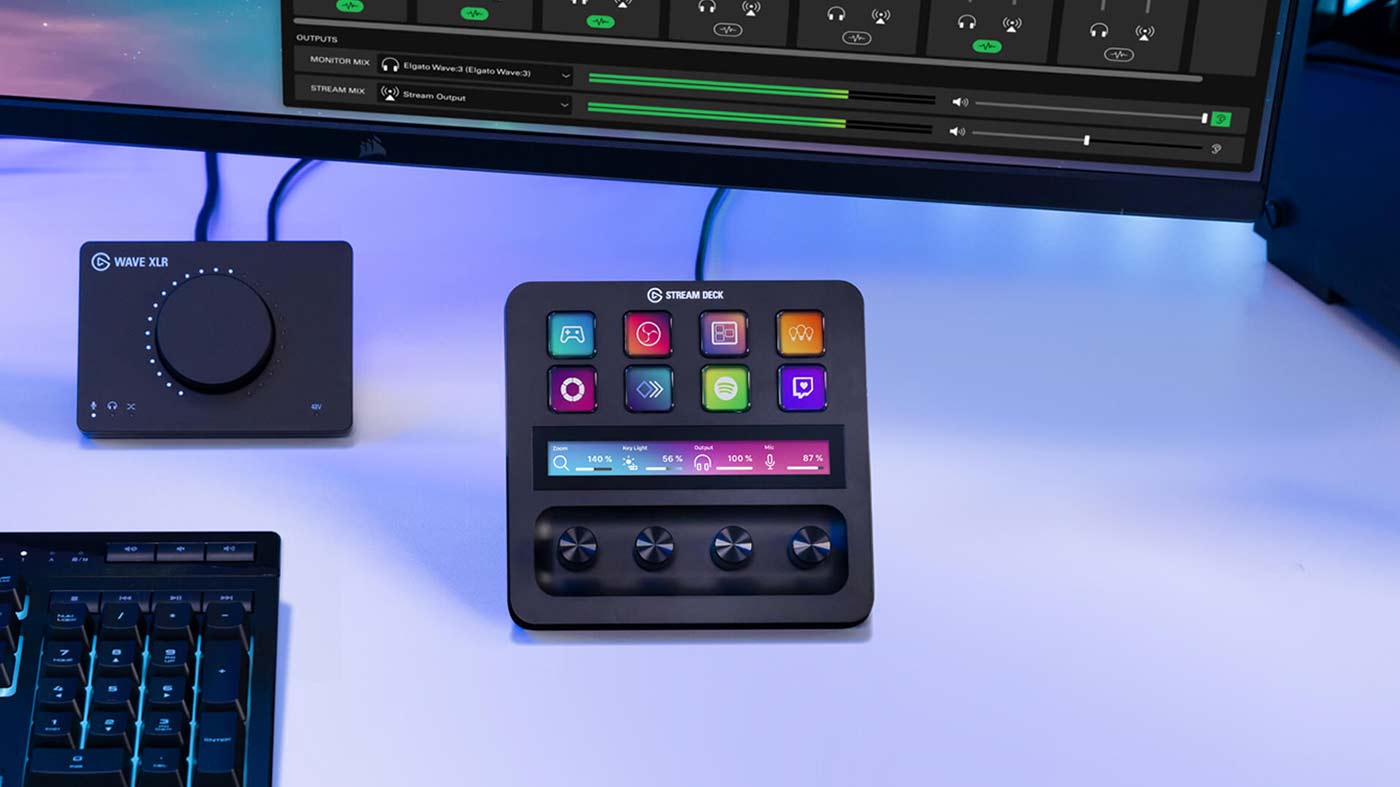The Elgato Stream Deck has quickly become synonymous with easy, customisable control solutions for streamers and content creators working from a desk at home. Simple interfaces tied to great software make them a natural fit into any workspace or flow and intuitive to use for live casts, but if the increasing popularity of products like the Razer Stream Controller (or the Loupedeck Live device it’s based on) is any indication, the people are ready for more. More, in this case, being dials and touchscreens. Enter the Elgato Stream Deck +.
The Stream Deck + is, in essence, Elgato’s answer to something like the Loupedeck, swapping out some of the buttons on the regular Stream Deck for four knobs and a four-panel touchscreen display to go with them. In the box, you get the Deck + itself (naturally) as well as the detachable stand and USB-C to USB-A cable. Nice and simple. Much like the Mk2 version of the standard Stream Deck, this one is fixed at a 45-degree angle and can technically be removed but you’ll have to break out a screwdriver to do it.
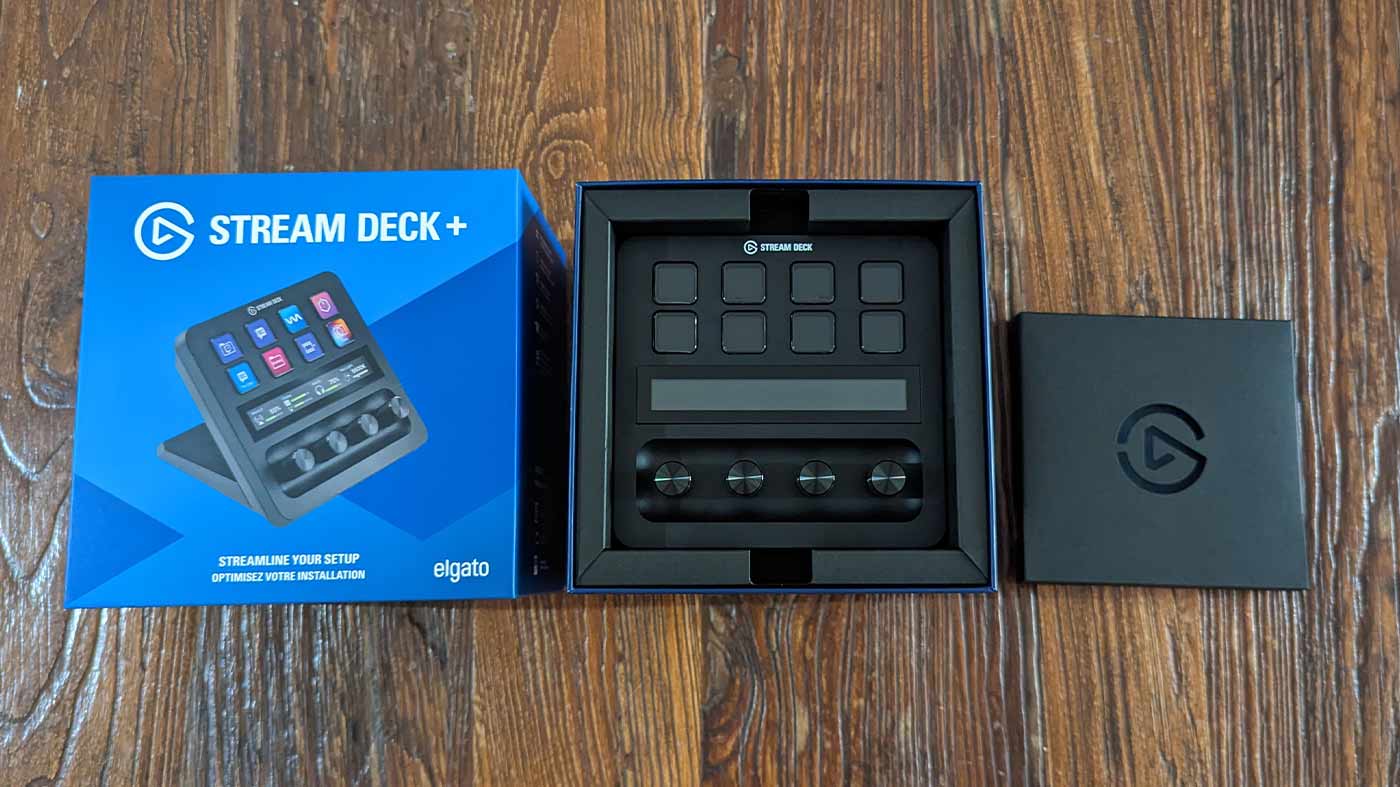
In what I assume was the desire to keep the whole front panel looking uniform and sensical, the width of buttons has been reduced from five on the standard Stream Deck to four on the Stream Deck + which means with only two rows there’s a total of eight customisable keys here versus 15. That’s a pretty significant reduction and probably the only real issue I have with this new take on the Deck. That said, they’re a bit bigger than the others which is nice, and depending on what you’re doing with them the dials and touchscreen can easily replace multiple keys, particularly through Elgato’s Dial Stacks.
GET YOURS: ELGATO STREAM DECK + AT AMAZON – $326 WITH FREE SHIPPING
Dial Stacks allow you to assign multiple functions to a single dial, switching between them by pressing it in which also changes to the display on the touchscreen above it to reflect what setting you’re manipulating. It makes it super easy to, say, cycle through volume settings on multiple audio sources, change multiple values in an Adobe project or even set up your home smart lighting – I set each of the four dials to a different room in my apartment and switch between individual lights with a press which is honestly pretty neat and almost makes me want a second Stream Deck + just for home control stuff.
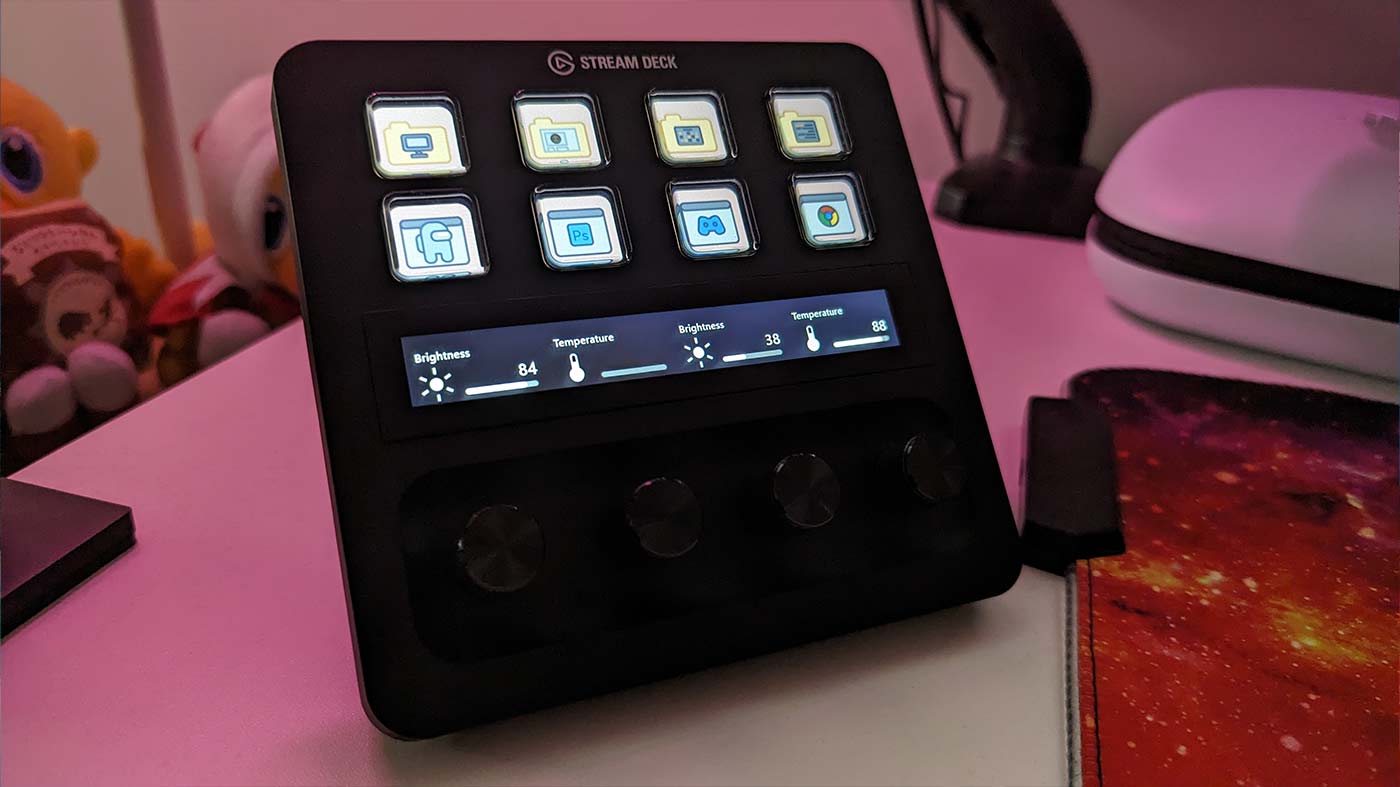
The dials themselves are great to use as well, with small but tactile ‘steps’ to each turn and a nice click to each press giving the brushed-metal knobs a very sleek and professional feel. Elgato has a handy page built into its Stream Deck Store that covers off a lot of the plugins that already support the dial/touchscreen combo, like a Discord Volume Mixer that can dynamically show you call participants and allow you to easily mix their levels on your end, or the Philips Hue plugin to easily switch and control lights, using the dials to adjust things like brightness and colour temperature.
The touchscreen bar on the Stream Deck + is fairly bright and sharp, much the same as what you get with the displays on the buttons above, although with the wider real estate there’s a lot of fun to be had coming up with attractive images and ways to display everything on it. You’re also saving more keys again here by being able to swipe the screen to change pages on the entire Deck, which would usually have taken up a precious slot on one of the buttons and feels natural to perform as an action. Having used the Razer Stream Controller previously I do miss the haptic feedback of the touch panels a little, but I’d absolutely cop that loss for the rest of what the Deck + has to offer.
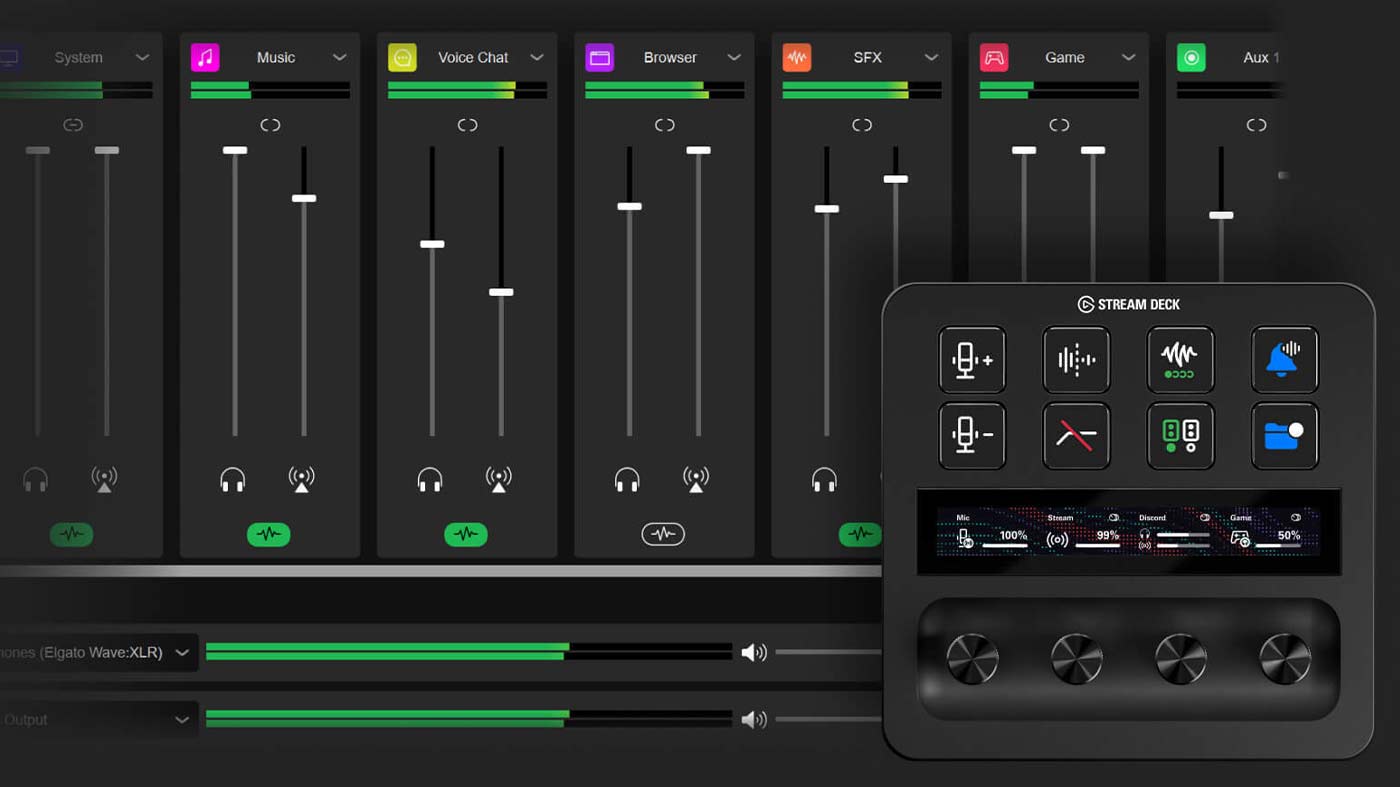
On the software side of things, nothing much has changed. If you’ve used a Stream Deck before it’s all run through the exact same software suite, allowing users to drag and drop functions onto each key (and now the Dials as well), customise the keys with images and labels, download free plug-ins to add new functions and set up extra profiles/pages for different situations. The list of plug-ins available for the unique functions of the Deck + already seems to be growing nicely, but the longevity of it will heavily depend on that support.
I’ve been using the Stream Deck + in conjunction with Elgato’s Wave DX dynamic microphone and Wave XLR interface and there’s absolutely something to be said about the synergy of devices within the family. The company’s Wave Link audio solution is already great, and combined with the easy controls and integration of the Deck it’s made sitting down to record the Press Start Podcast every week or quickly and easily control OBS software with multiple sources an absolute breeze.
At the end of the day, whether or not the Stream Deck + is right for you will largely hinge on your need for the Dials and the incremental adjustment opportunities they provide. If your uses are more “binary” like activating transitions, switching things on/off or just hitting shortcuts then a standard Stream Deck should mostly suffice. If you’d like to instantly scale up your production potential and get something approaching your own mixing board without taking up a premium of space on your desk though, this is a very compelling option.
